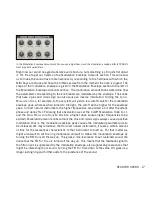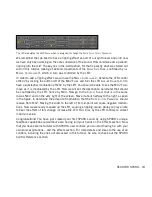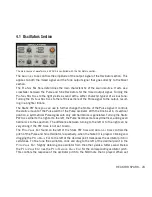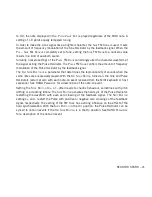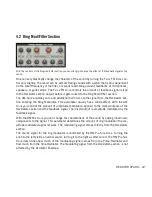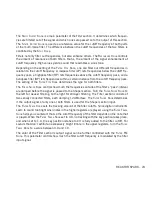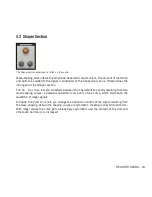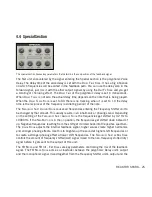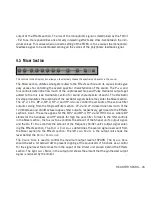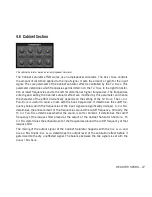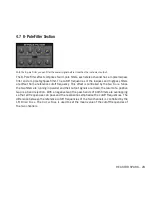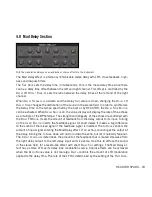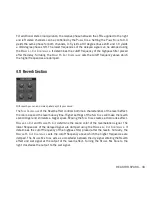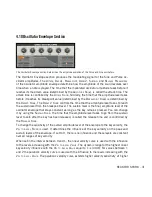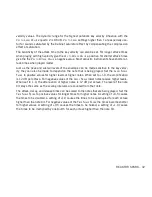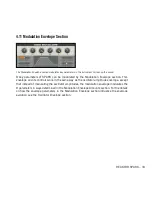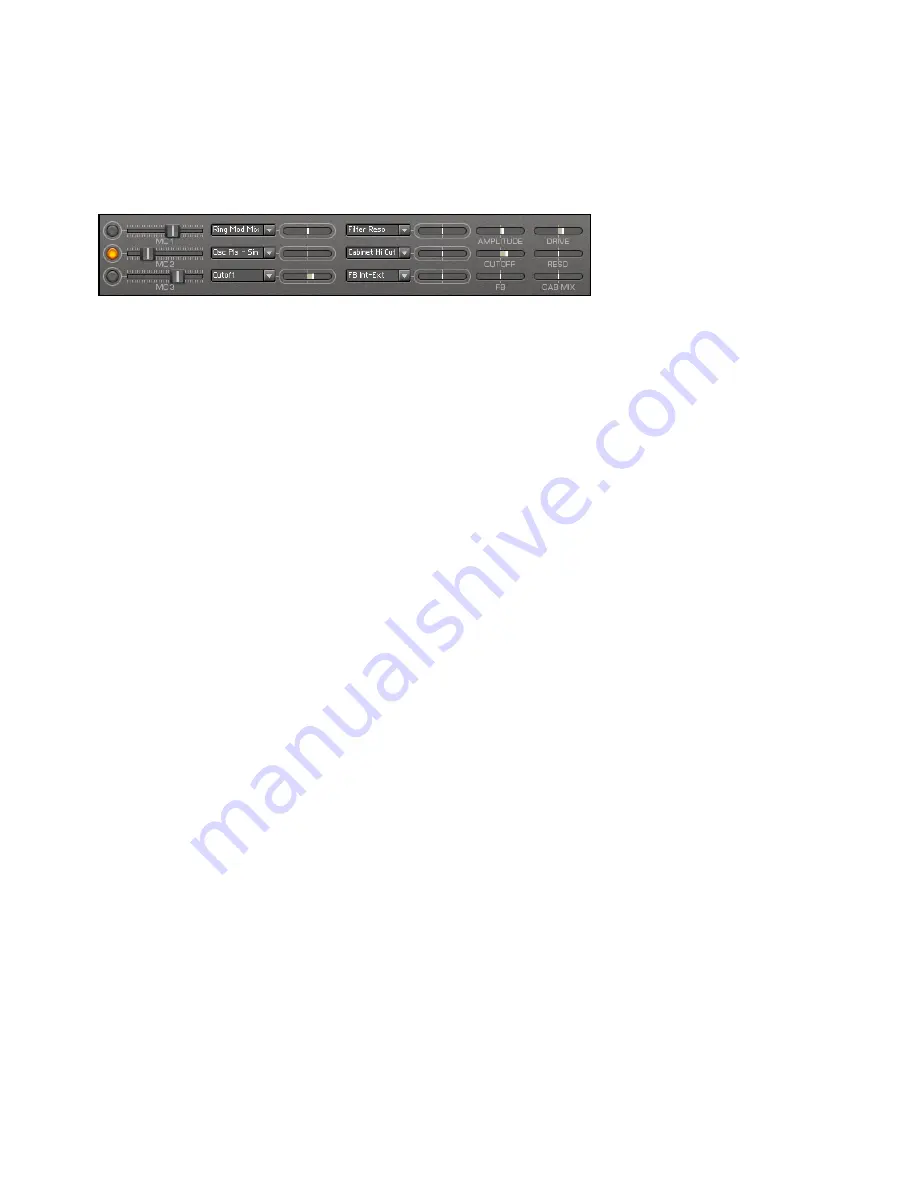
REAKTOR SPARK – 18
The LFO modulates the
Mc2 F
aDer
which is assigned to change the
S
tatic
F
ilter
c
utoFF
p
araMeter
.
We remember that we liked to have a rippling effect as part of our synth lead, and until now
we have only been working on the core substance of the sound. How could we add a periodic
rippling into the mix? The key lies in the word period, for that is exactly what we started out
with in this tutorial, looking at periodic movements of the
D
elay
t
iMe
K
nob
, controlled by
the
M
acro
c
ontroller
3
, which in turn was controlled by the LFO.
In order to add a rippling effect, we will use the
M
acro
c
ontroller
2
. Activate the LFO control
of
Mc2
by clicking the button left of the
Mc2 F
aDer
and turn the
lFo a
Mount
K
nob
to 0.5 to
have a substantial modulation of MC2 by the LFO. You should be able to see the
Mc2 F
aDer
move as it is modulated by the LFO. Now we will set the destination parameter that should
be controlled by the LFO, hence by
Mc2
. Now go to the
c
utoFF
S
liDer
that is in the same
row as
Mc2
and
on the very right of the screen. Move it about halfway to the right, as seen
in the figure, to determine the amount of modulation that the
F
ilter
c
utoFF
p
araMeter
should
receive from
Mc2
. Moving the slider to the left of its mid-point will cause negative modula-
tions. Now we are ready to speed up the LFO, causing a rippling sound: while you play a note
to hear the effect of this change, increase the
lFo r
ate
K
nob
by the LFO controls to almost
maximum value.
Congratulations! You have just created your first SPARK sound by using SPARK’s unique
feedback capabilities and without even having laid your hands on the Effects section. Now
that you have become familiar with SPARK’s new controls, you can start having fun with your
own sonic explorations – and the effects section. For more details and ideas to the use of all
controls, including the ones not discussed in this tutorial, be sure to check out the SPARK
Control Reference section.
Summary of Contents for Reaktor Spark
Page 1: ...MANUAL...














